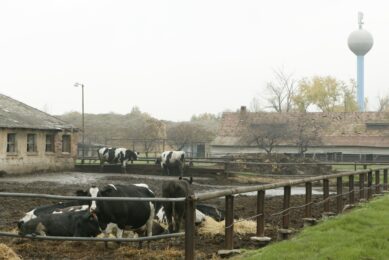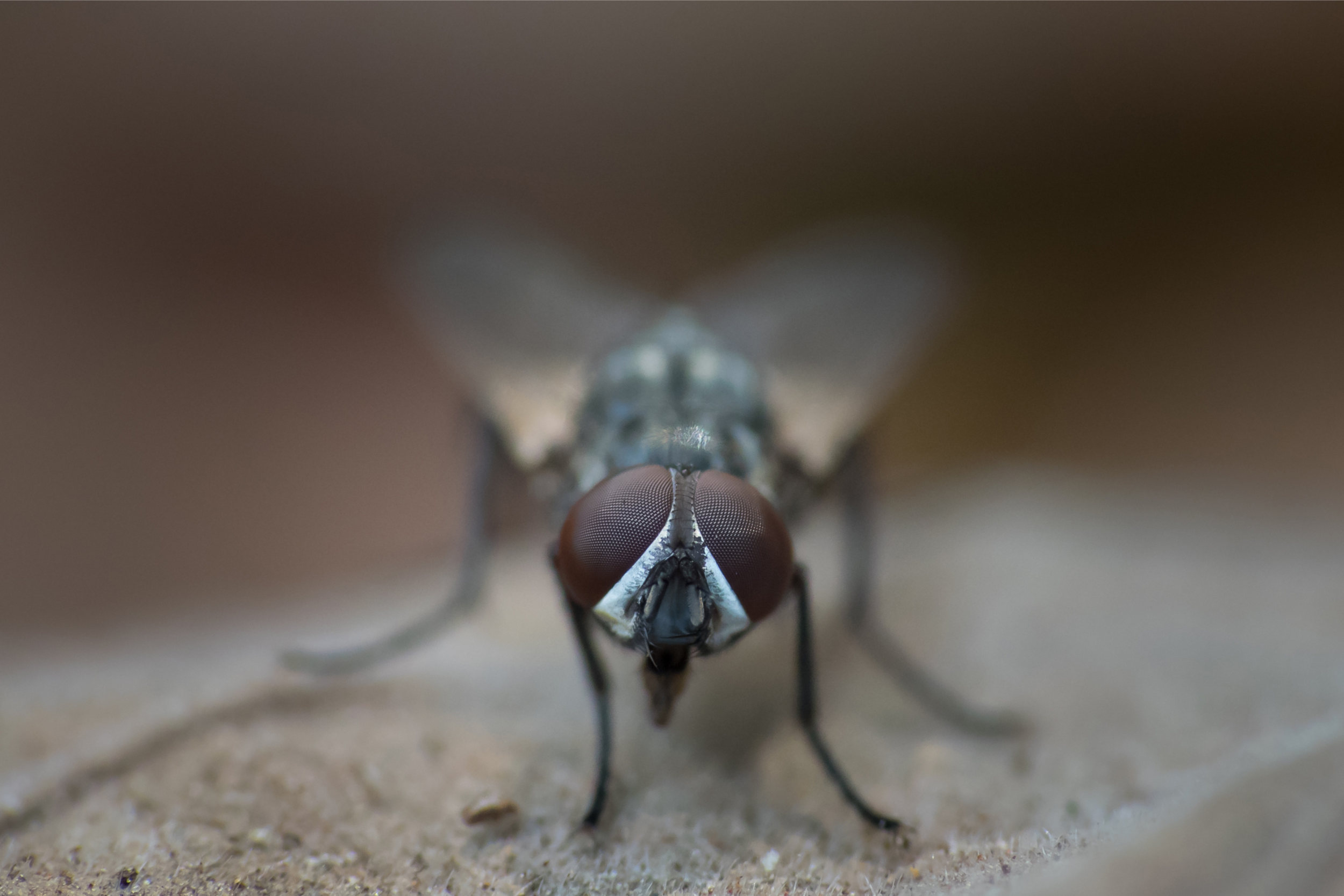Farm visit: Peace and pleasure in the emerging pig market of Laos
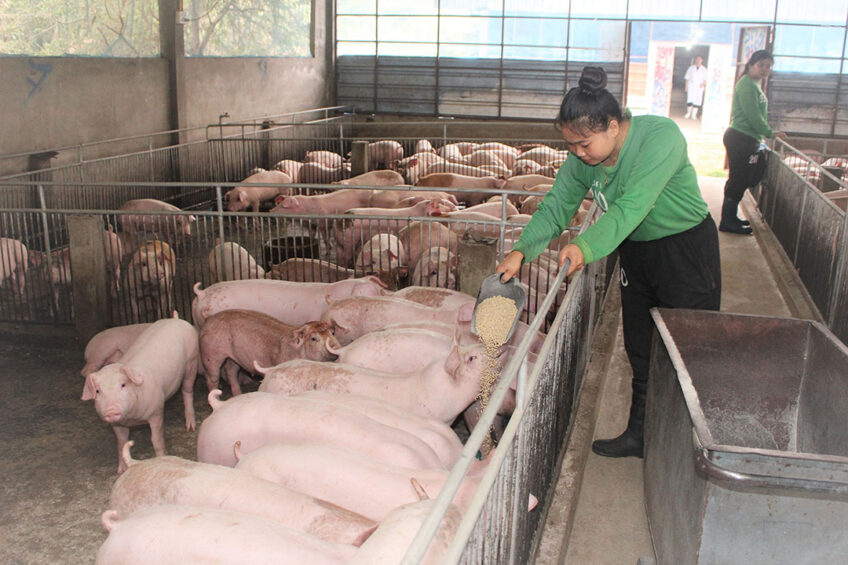
Laos is one of the big unknowns in South-East Asia. The landlocked country, squeezed in between livestock giants Thailand and Vietnam, is only gradually tapping into its potential – with a little help from abroad. PigProgress went behind the scenes of UDA Farm, which aims to become exemplary for other farms in Laos.
It is a ritual she performs about 10 times a day – with pleasure. Employee Otsa Khinmaneethong pushes the metal scoop into her carriage and shakes feed out in the long stone trough on the other side of the low wall. At first the porcine inhabitants greet the visitor with unusual calmness, then, when they recognise what is about to happen, they scramble in front of the trough to get a bite of this treat. Ther is excitement on both sides of the wall when Otsa throws the last few pellets in the air.
The grower and finisher pigs receive this kind of treat regularly every day – in relatively small portions. Thus the pigs never overeat but are always alert for more. Each member of the UDA Farm staff is responsible for one pig house, providing plenty of these “contact moments” in which any potential health issue can be picked up easily.
Today, however, everything seems fine. A group of 10 growers is enthusiastically devouring an empty feed bag; the outside temperature today is a remarkably pleasant 25°C; and no flies or insects are inside the barn, as the sides are sealed off by mosquito nets. It is a pleasantly quiet day in the life of UDA Farm, one of the most modern and leading swine facilities in Laos. The farm is located approximately 40 km north of the capital Vientiane, at the lakeside, just within the boundary of Vientiane prefecture. Spread out over 120 ha, the farm has 56 buildings. It is a closed farm with room for great-grandparent, grandparent and parent stock and growers and finisher pigs.
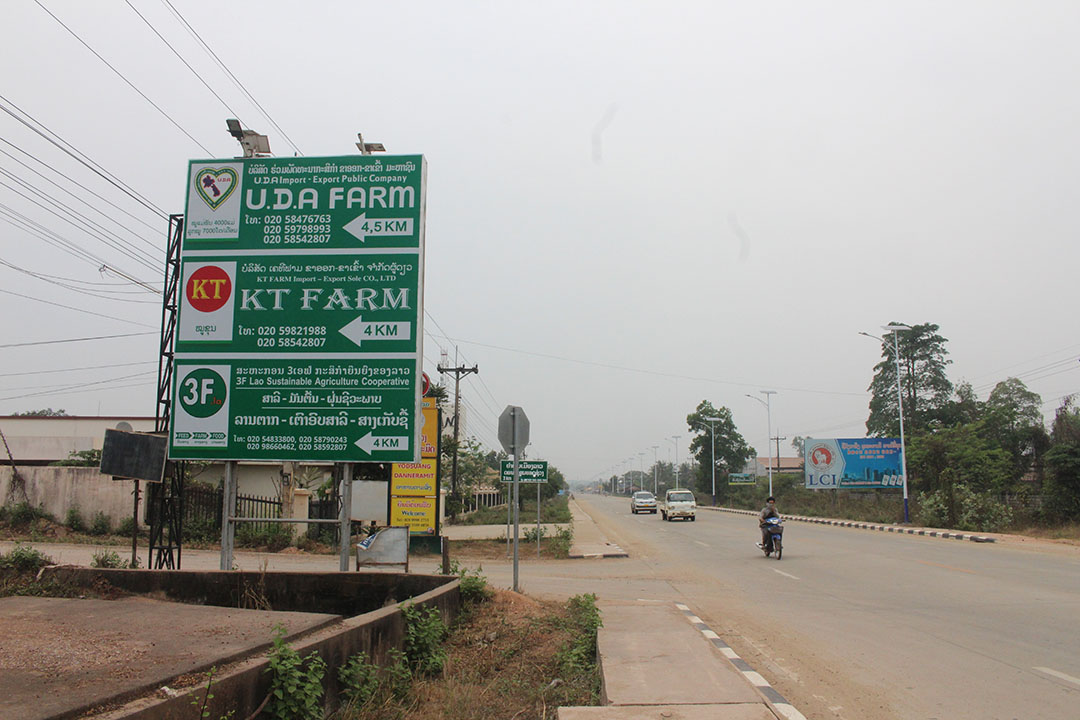

Developing Laos
Laos is a developing country where most of the 4 million pigs are still held in backyard production. Since 1975, the country has had a socialist government, which can be seen in the way the country is organised. In comparison to neighbouring Thailand or Vietnam, with similar climates and cultures, the country feels somehow like driving a car with the handbrake on. Foreign companies are present, yet their presence is modest. Public life is characterised by bad road surfaces and less hustle and bustle.
But the positive side is that there is considerable room for improvement, and that has been the case in the last 15 years. Foreign investment is making a difference. China is known to have invested massively in Laos recently, for instance in constructing high-speed railways. In pig production, however, the Chinese mostly focus on finisher production. More profound in the industry are investments by Thailand’s biggest integrator Charoen Pokphand Foods (CPF) for instance.

Strong Thai input on pig farm in Laos
At UDA Farm, strong Thai input can be found as well. Achieving about 25–26 weaned piglets per sow per year, the farm is consistently among the top producers in the country. It was not always a matter of peace and quiet though, explains farm owner Khanthong Sipaseuth, age 44. The reason he ended up in the swine business was nothing less than a crisis a few years ago. His family has been involved in various industries, one of them being pig farming since 2010. He took this pig production part of the family business over from his mother in 2016 – prior to that he had focused on the family’s printing business.
In the years prior to 2016 times had been tough, he recalls. In 2014–2015, the farm had lost money for 16 consecutive months due to the presence of Porcine Reproductive and Respiratory Syndrome (PRRS) – which for him was the reason to join in. “I basically learnt everything there is to know about pigs from my mother,” he says. “Yet, I was open for opportunities and suggestions to give this company a chance.”
6 zones on the farm
What he inherited in 2016 was a 56-building complex, divided over six separate zones.
Zone 1: Parent stock;
Zone 2: Great-grandparent and grandparent stock, with its own nursery;
Zone 3: Parent stock;
Zone 4: Parent stock (quarantine for replacement gilts);
Zone 5: Nursery pigs; and
Zone 6: Finishing pigs.
In his search for proper advice on how to deal with this large farm complex, he spoke to countless different consultants and advisors. Some had good advice to offer; others, however, left him with more questions than answers. Eventually he felt things got on the right track when a group of Thai investors helped him with decent consultation as well as advice. That led to a reconstruction policy based on 3 pillars: management, genetics and nutrition.
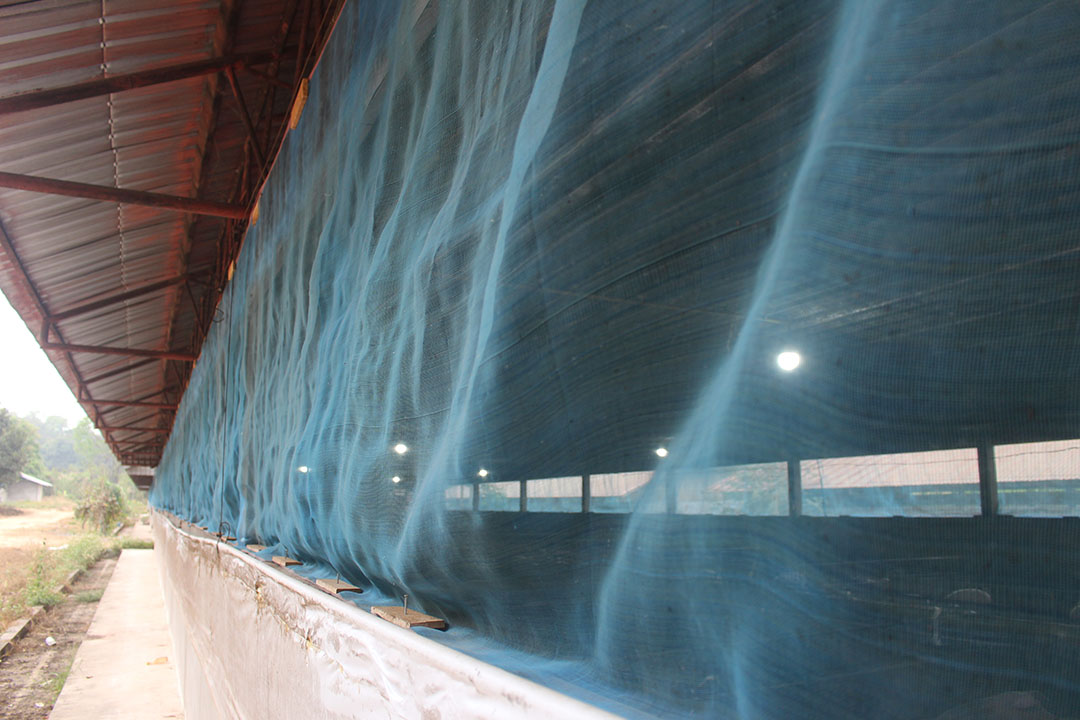
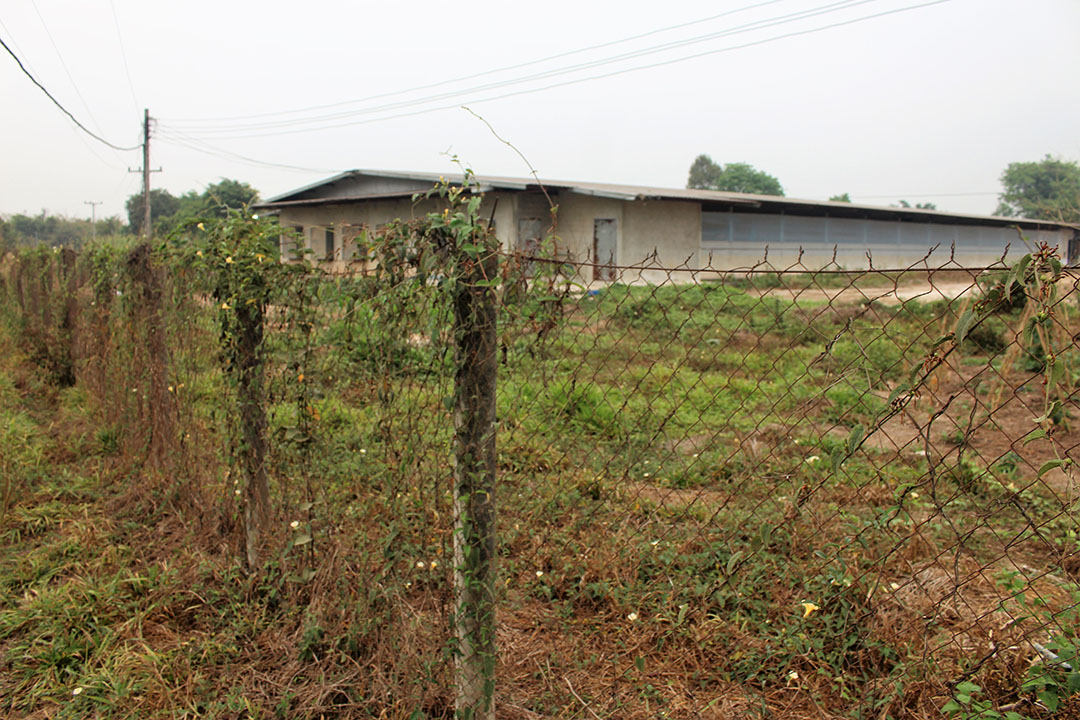
 (Biosecurity) management
(Biosecurity) management
Khanthong’s capacities as new owner were soon to be tested, as Foot-and-Mouth Disease (FMD) emerged soon after his start on UDA Farm in 2017. He says, “Our first task was to change the behaviour of our employees. They did not know about biosecurity, and would walk in and out. They needed to change their behaviour as we were going to move towards a closed system.”
Thus management with a strong biosecurity component was the first of 3 major changes implemented on the farm, explains Khanthong. “The emphasis was on team building. We always have breakfast together at 6am – and we also have dinner together. Employees eat the same as the boss. I felt I needed to build and gain the trust of the employees. Yet I had to be strict to the employees. Whoever did not follow, would be out.”
ASF in Laos
The strict approach paid off. Within a year, in 2018, the FMD problems belonged to the past, he says. The relative lull in animal health issues was short-lived though, as just a year later the news broke that African Swine Fever (ASF) had reached Laos. “I was in fear,” he recalls. “I thought, ‘If ASF were to come to this farm it would be a disaster.’ It is difficult to say what it would feel like if I would have a pig house without animals.”
3 waves
For a long time Khanthong hoped the virus would stay away, but because of a misunderstanding, ASF virus eventually did reach UDA Farm – in 3 waves, to be precise, and on a limited scale. “We had been practising role plays since 2019 to be prepared for a situation like this. So when it happened in December 2021 everyone knew what to do. It happened in one particular barn, where eventually 200–300 sows died.
Khanthong continues, “A second outbreak followed in that same barn in June 2022. In that outbreak, in total eight parent stock sows died. The third occurred on 1 February 2023, when again in that same pig house 13 pigs died, of which one was a sow and 12 were piglets.”
He explains that the difference in casualties was because in the second and third outbreaks, both sanitation and management had been optimised, so it could be tackled adequately.
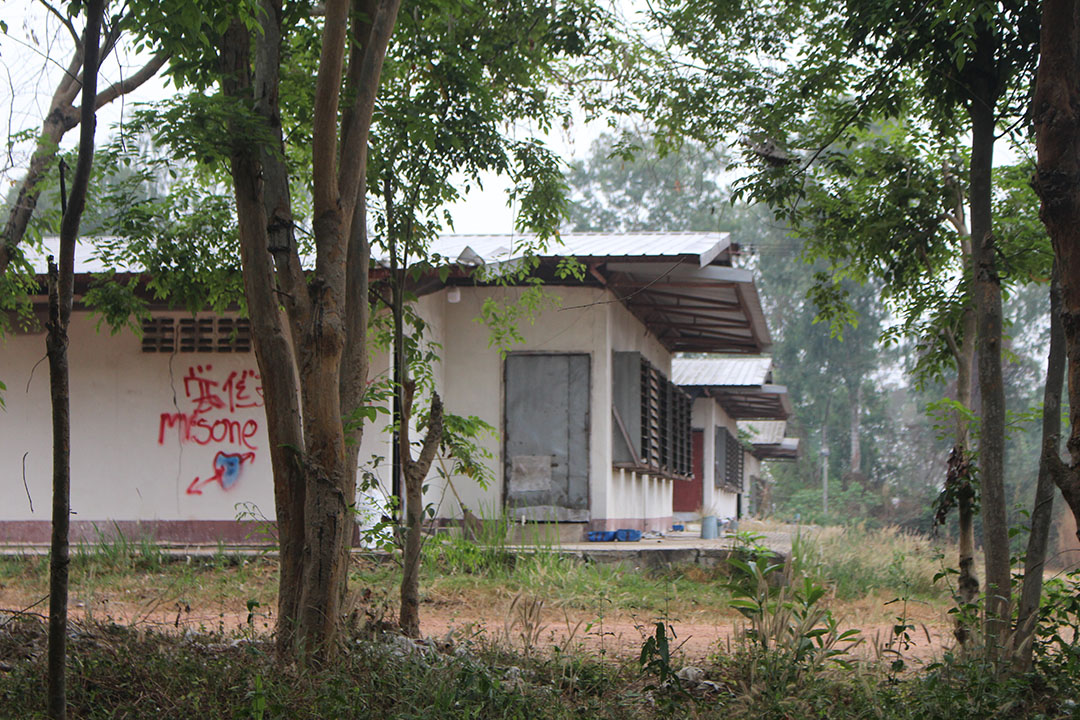
 Genetics
Genetics
Does that method of controlling ASF virus sound atypical? The approach certainly does not follow procedures such as culling and stamping out that would be advised in Europe or North America, but in Asia it is not uncommon. UDA Farm focused on removing only the infected animals while continuing production with the rest of the farm – a strategy that is often followed in China and Vietnam, often, however, with rather unpredictable and unsatisfactory results.
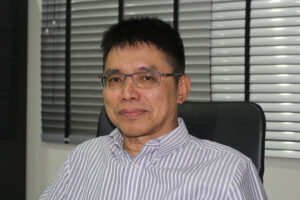
That is mostly because most farms do not really have deep understanding of what they are doing, explains Dr Sakchai Topanurak, lecturer of veterinary science and genetics at Chulalongkorn University, Thailand, and founder and owner of genetics company SiamPigs. The company follows the philosophy of selection for disease resistance. In short this means that pigs in his programme are selected for resistance or tolerance to deal with Escherichia coli, Actinobacillus pleuropneumoniae (App) and PRRS virus. (More information about the SiamPigs method was explained in Pig Progress 32.01, published in 2016.)
Vaccination and antibiotics mostly unnecessary
For that reason, the offspring are much better prepared for a life under Asian conditions where these pathogens are widespread, Dr Sakchai says. In addition, vaccination and antibiotics are mostly unnecessary, he says – and that all helps make the swine industry more sustainable, both economically and environmentally. He says, “We created technologies in Asia for Asian markets.” Dr Sakchai has been working according to this philosophy for over 30 years, and his methods are receiving a growing amount of interest.
“The strategy at UDA Farm was to start to build an own herd according to the SiamPigs philosophy,” says Dr Sakchai. “So we did not ship an entire herd of breeding animals from Thailand to Laos; rather, we wanted to help them build up their own supply.”
More robust
The idea is that the SiamPigs animals will eventually become more robust than conventional pigs. Prominent prevalent pathogens such as E. coli, PRRS virus or App do not compromise their health. Dr Sakchai explains, “When ASF virus visits a farm, you will typically see that it first occurs in the animals that are already weaker. So when there is no weak animal, the prevalence of ASF will go down in the farm.”
When ASF first broke out at UDA Farm in December 2021, Dr Sakchai had confidence in the health and condition of the rest of the pigs on the farm. His first reaction was to curtain off all other 55 pig houses with fine mosquito nets. The nets allowed air to continue to flow naturally through the pig houses yet didn’t allow insects to get in. Dr Sakchai says, “We know that ASF is a vector-borne disease, so it can be spread by flying insects. If we could make sure that none of the other pig houses could be infected, we could limit the outbreak to one pig house only.”
Dr Sakchai let the virus spread in this one pig house – and once that was over, it was cleaned and disinfected. After that, the virus returned only on a very minor scale, probably related to disinfection having been carried out suboptimally.
Back cross-breeding
One aspect he wishes to emphasise in this context is the practice of back cross-breeding. Often practised in Asia, this method uses female finisher pigs for breeding purposes again to quickly rebuild pig populations, and to make up for lost years during the ASF outbreaks. That happened in China, but also Vietnam, Laos and Thailand.
Back cross-breeding, however, is devastating for a good genetic policy, Dr Sakchai says. Especially when both the dam and the sire lines have been selected for disease resistance. The end result of the breeding programme is a robust finisher. Yet, reintroducing those finishers again in higher levels in the breeding pyramid may lead to a disruption of the breeding programme. Dr Sakchai expects that method to be the reason that ASF is making a comeback in Asia. Acting upon knowledge and understanding makes the difference, he believes.
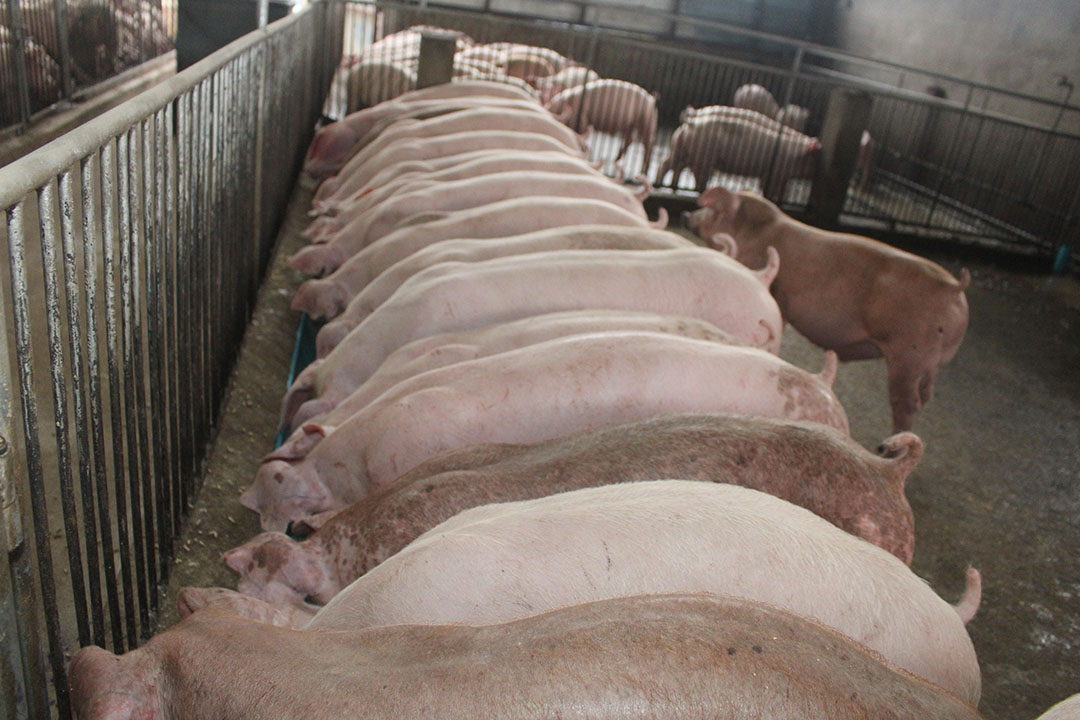
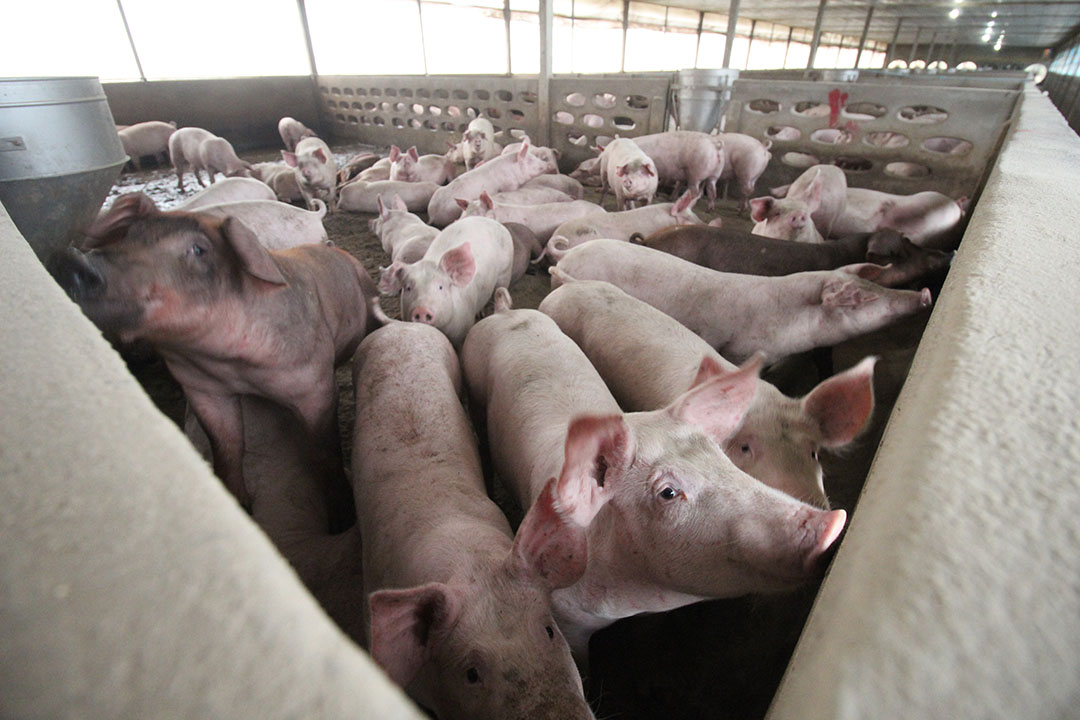
 Nutrition
Nutrition
Last but not least, the third pillar in the reform of UDA Farm is to provide decent quality nutrition – with feed that sometimes now reaches food quality standards. That is different from before, when feed stuff quality had not been top of mind. Meals at UDA Farm are based on steamed broken rice and full fat soybeans and are supplemented with high quality fishmeal, enzymes and probiotics. Most feedstuffs are bought from Laos and Thailand.
Antibiotics are not added to the feed as standard. When animals need care they are treated individually, with tilmicosin or tiamulin, for example, by injection.
At the time of the visit, the feed conversion ratio (FCR) was 1.4 at UDA Farm – prior to the new strategy in 2016, it was 1.7–2.2. UDA Farm reaches an average daily gain of over 400 g/day in the nursery pigs. That is also a considerable improvement compared to previously, when the average daily gain was below 330 g/day. All in all, the change in feed formula has led to a profit of between 2.5 to 3 million Thai baht/year (€ 67,000 to € 81,000).
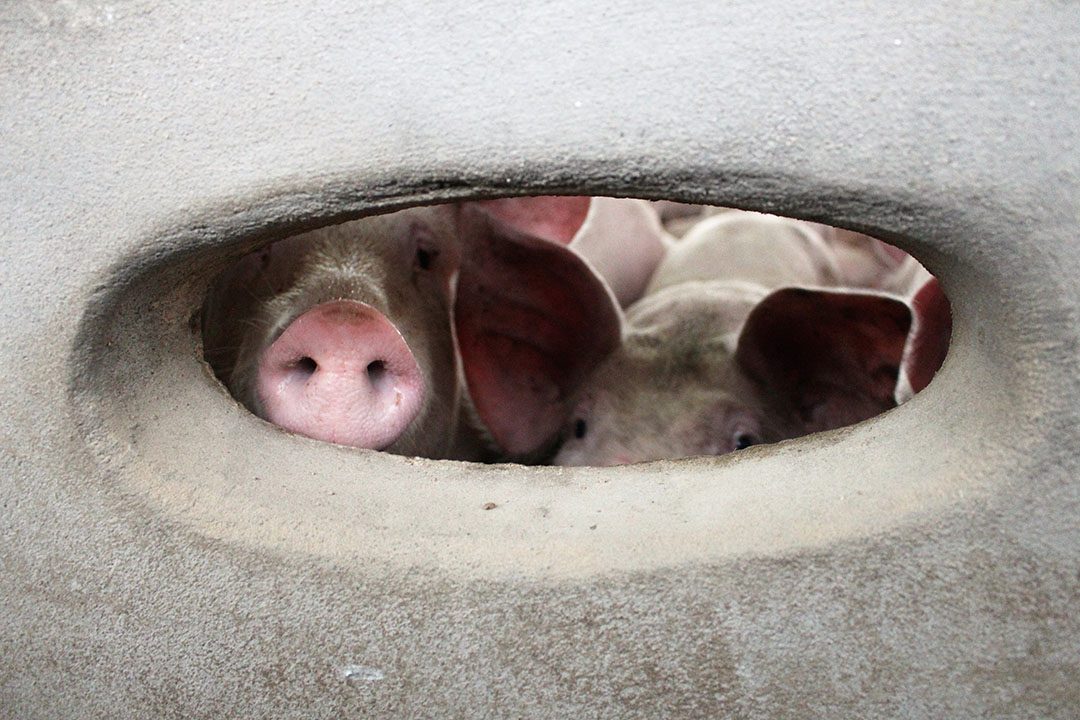
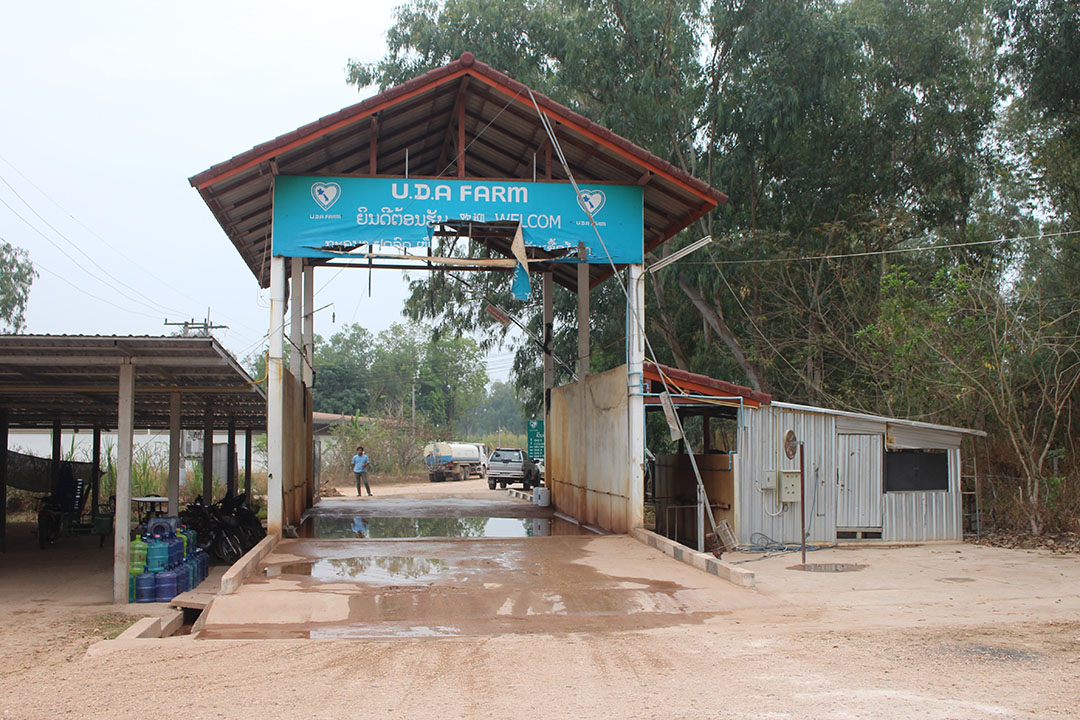
The future of UDA Farm
Having got through ASF relatively unscathed did not mean that UDA Farm became wealthy. When ASF hit Laos, a lot of pork was simply dumped on the market. Demand for both piglets and pork dropped considerably. One temporary solution to overcome the problem was to let the pigs graze and roam freely within the farm’s own fenced-off grounds so the animals could forage rather than be fed expensive feeds.
In 2023, UDA Farm comes across as a self-conscious farm site that would like others to profit from where it is going. With Laos still being relatively in its infancy in terms of development, there are plenty of opportunities.
3 future ambitions
For the future, Khanthong would like to achieve 3 things. Firstly, he would like to construct an own feed mill, Currently, there are only 6 of them in the whole of Laos. Thus he wants to build a bit of integration into the farm. Secondly, he would like to be a supplier of genetics inside Laos. Thirdly, he wants to become a leader in terms of agricultural development, and have that status supported by the government.
Perhaps remarkably, he does not mention further expansion of the farm as one of his goals. Khanthong shakes his head and says, “It is these 3 things that I would like to focus on. Growth is for other people to do.”




